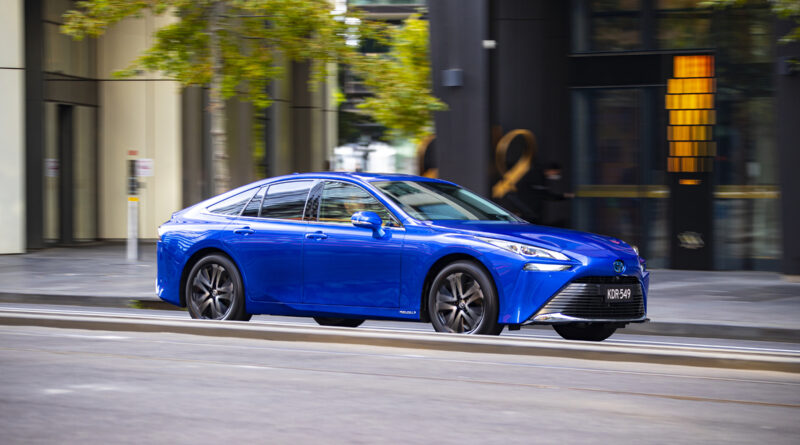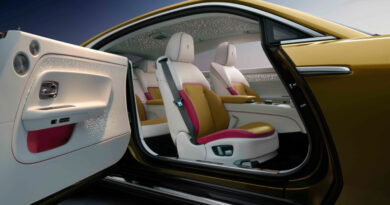2021 Toyota Mirai review
The Mirai is the hydrogen equivalent of the Prius hybrid that Toyota launched in Australia in 2001.
It is a showcase of hydrogen fuel cell electric vehicle technology (FCEV) but it is unlikely to ever be a big seller for the Toyota brand.
Think of it more as a showcase – a mobile billboard – to prove the technology works. And in case you’re wondering, Mirai is a Japanese word that translates to “future”, which gives you an idea of its remit.
Toyota believes hydrogen FCEV could play a significant role on Australian roads in future, particularly with vehicles such as the Hilux, Prado and LandCruiser – large off-roaders that are used in remote areas and to tow.
If it’s even half as successful as that original Prius in sowing the seeds of a new form of drivetrain tech then the Mirai will have done its job.
Value
There’s only a single Mirai model on sale in Australia and you can’t buy it, you can only lease it. Even then, Toyota is being picky about who it leases the Mirai to.
That’s similar to the Hyundai Nexo, which was the first hydrogen FCEV to go on sale in Australia (Hyundai also believes hydrogen is viable tech for Australia).
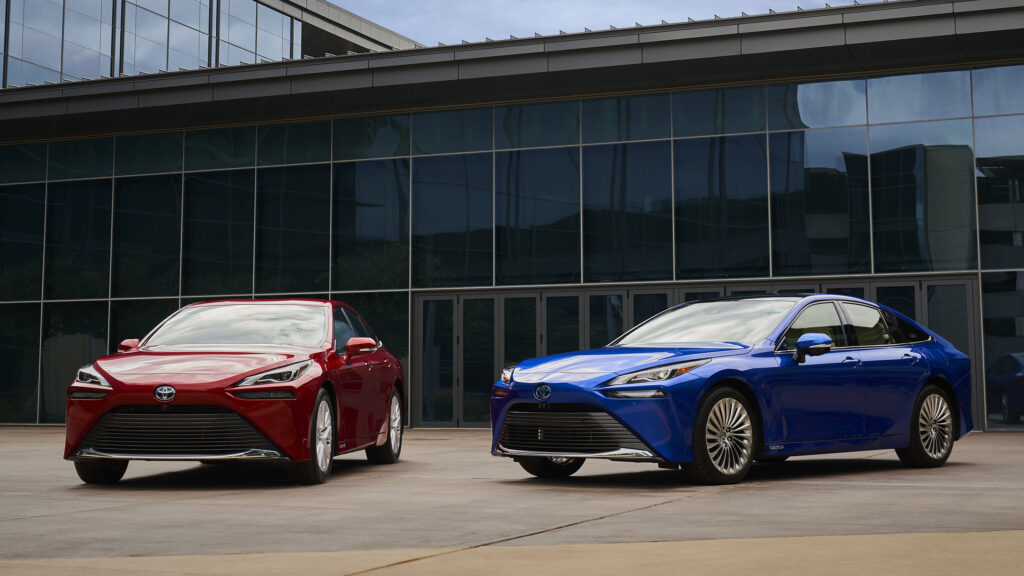
Fleets and governments are the preferred option for the Mirai and they will likely have to keep the cars in Melbourne and not too far from Altona, which is where Toyota has its Hydrogen Centre that includes a hydrogen refueler on site.
The lease cost is $1750 per month over three years and 60,000km, something that also includes the cost of hydrogen. That works out to $63,000 over the three-year period, then you hand the car back at the end.
Servicing is another $2693 across the lease period.
So it works out to about $1.09 per kilometre – assuming you travel the full 60,000km.
By way of comparison, in the US the Mirai sells for a bit under US$60,000, which at today’s exchange rate is around $75,000.
For that you get a large sedan with five seats.
There’s a healthy smattering of equipment that includes 19-inch alloy wheels, fake leather trim, dual-zone ventilation, smart key entry, digital radio tuning and a 14-speaker JBL sound system. There’s also a digital instrument cluster and a 12.3-inch centre infotainment screen incorporating Apple CarPlay and Android Auto.

Active safety includes blind spot warning, auto braking, adaptive cruise control, speed sign recognition and lane keep assistance.
But no head-up display, sunroof or wireless phone charging. And there’s only a tyre repair kit in the boot, no spare.
Inside the Mirai
The Mirai is deceptively large. Deceptive because its relatively low roof and coupe-like stance makes it look quite compact, but from the outside it’s longer and wider than a Camry, by 71mm and 45mm respectively.
Not that the space translates to acres of room inside; anything but! And it’s all because of hydrogen tanks. The Mirai has three tanks carrying a combined 5.6kg of hydrogen. They’re chunky cylindrical carbon fibre tanks that have to go somewhere and in the case of the Mirai there’s one under the boot, one under the back seat and a third one running along the centre of the car between the front seats.
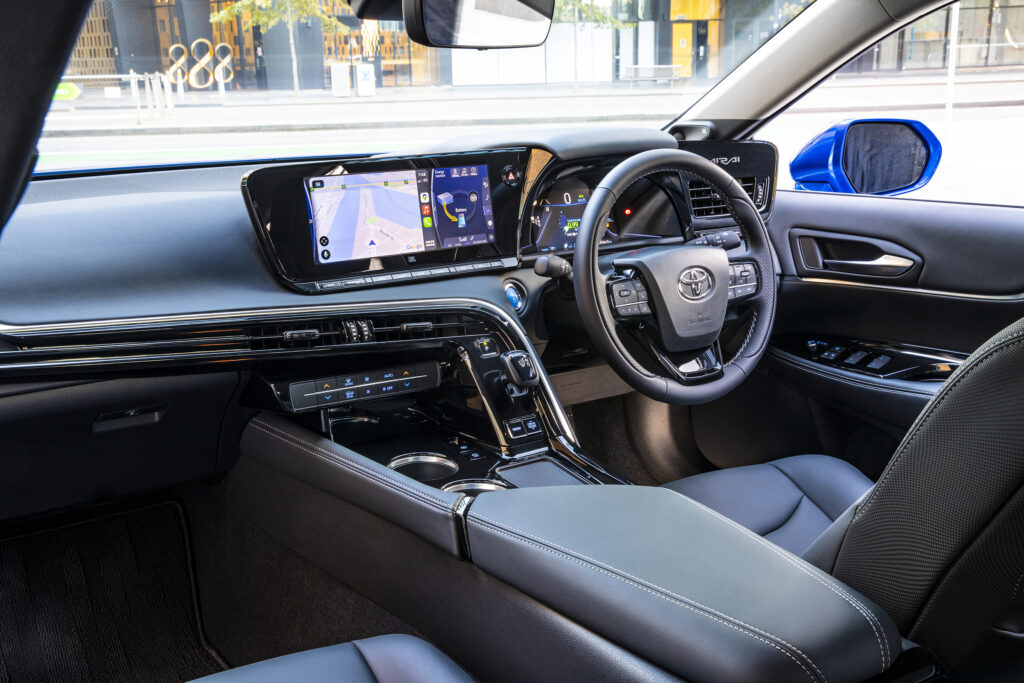
It’s that central one that makes things tricky for occupant space. It creates an enormous hump on the floor in the back, so even though there are five seats you’d only use the centre rear one when you had to, because that centre person has to steal foot space of the people on either side.
And the high centre console between the front seat occupants is also quite shallow because the tank takes up space below it.
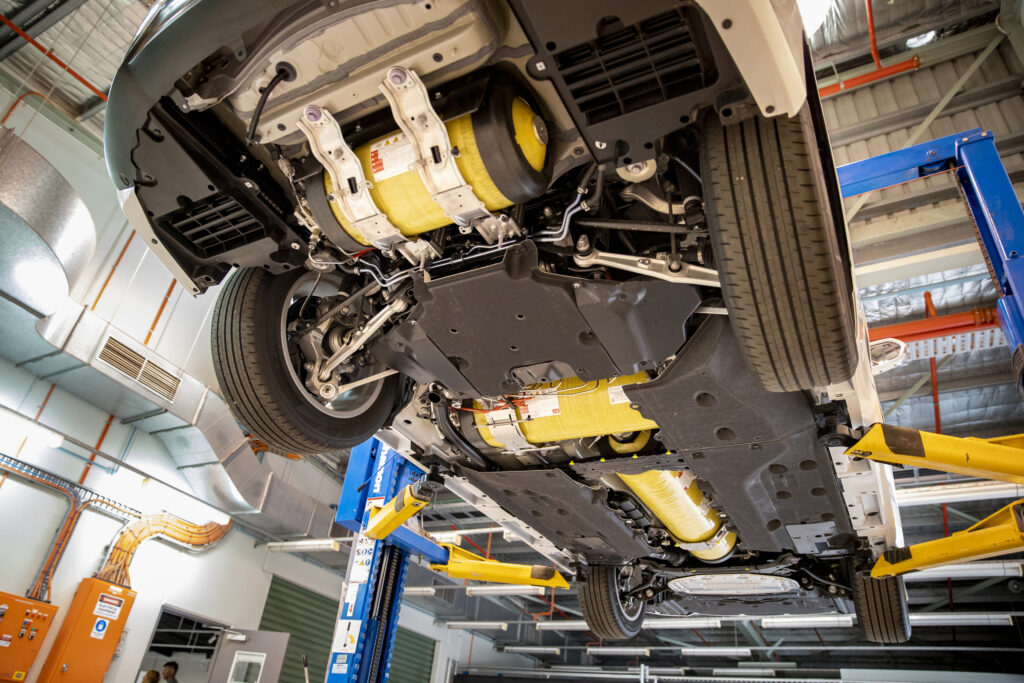
The low-slung roof also means some ducking for taller folk when getting in, although once there there’s respectable head space, especially up front. The front seats are also impressively supportive.
The boot continues the theme in that it is compromised – in the same way the original Prius was when it arrived two decades ago. The rear seats can’t be folded, limiting usefulness carrying bulky items. And the 272-litre capacity is modest, albeit in a wide and usable way.
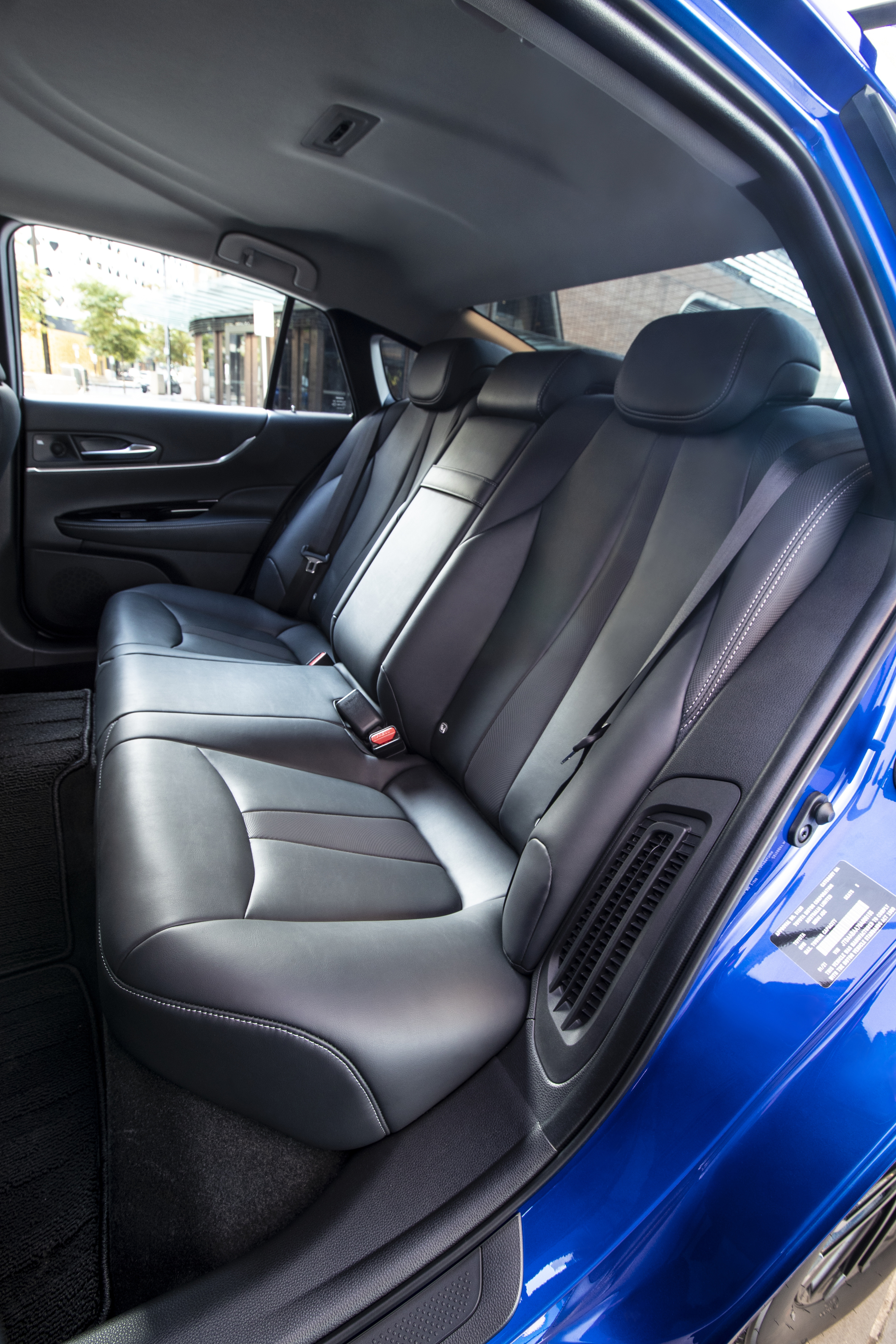
The presentation is a step above most Toyotas, too. It seems in presenting a premium, tech-focused car Toyota wanted to stretch itself with materials and finishes. The broadly-spread fake leather looks genuine enough and makes its way to the dash and doors.
The sweep of the dashboard, contrasting stitching and use of silver highlights adds to a cabin ambience that is closer to the Lexus side of the attention-to-detail ledger than the Toyota one.
Performance and efficiency
The Mirai is an electric vehicle but one fed predominantly by a fuel cell rather than batteries.
The fuel cell sits under the bonnet looking a lot like an engine and sends up to 128kW of electricity through the system on demand. There’s also a 1.24kWh lithium-ion battery pack borrowed from the latest Toyota hybrid models.
That battery can more instantaneously provide power and also add to what the fuel cell is creating.
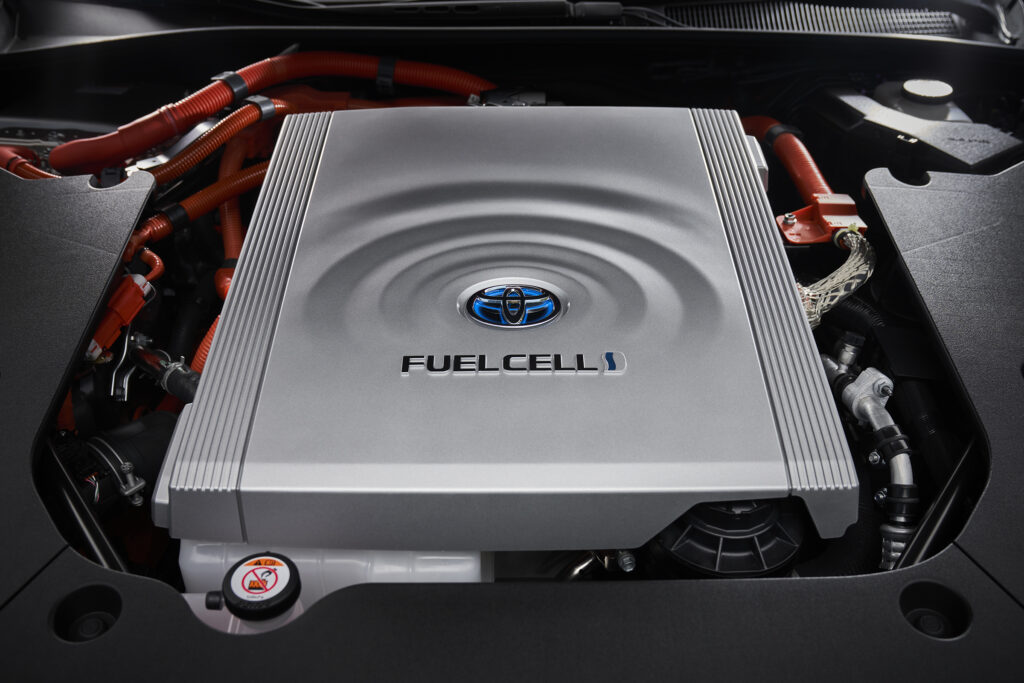
That’s because the electric motor can produce up to 134kW and 300Nm, so there are times when the two may be needed for short bursts.
As with a hybrid, the battery pack also stores energy from regenerative braking, improving the overall efficiency of the system.
Performance is respectable without being startling, the 0-100km/h benchmark taking 9.2 seconds.
It’s the 300Nm of torque that adds most muscle when accelerating, although the 1900kg weight of the car – fuel cell components add up! – takes its toll.
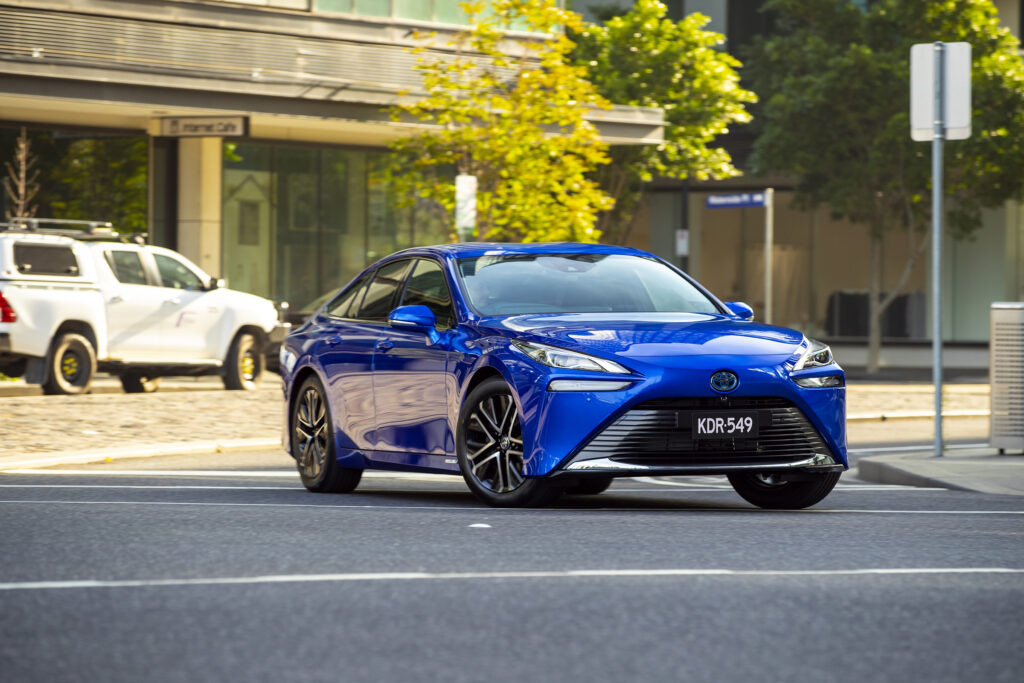
It’s fine around town, though, and even with the speedo approaching triple figures there’s enough oomph to suggest it won’t have an issue with open-road driving. Our brief drive was limited to suburban running and a blat around a small test course, but it was enough to establish the Mirai is more than capable of everyday duties and of slick and faithful acceleration.
More impressive is the way it goes about its business. That single electric motor is mounted in the rear of the car driving the rear wheels, something that is very rare in sedans from mainstream brands in the 21st century. The last Toyota sedan with rear-wheel drive was the Cressida that was killed off in the early 1990s.

So when powering out of a tight corner or side street there’s very little chance of wheelspin, even when full power is applied. Anyone who’s driven a Hyundai Kona Electric or Nissan Leaf will understand the advantages there, each prone to a yelp of the inside front wheel if you get too enthusiastic.
Charging
There’s no charging with the Mirai, only refuelling – and it’s done at a specific hydrogen station, of which there are very few. As of April 2021 there are only two hydrogen stations in Australia, one in Canberra and the other at Toyota’s Hydrogen Centre in the west of Melbourne.

Refuelling takes about five minutes and is very similar to using a petrol bowser, expect instead of poking a nozzle in the car and pumping a liquid in, a collar slides over a nozzle that sticks out of the car to feed pressurised gas into the carbon fibre tanks.
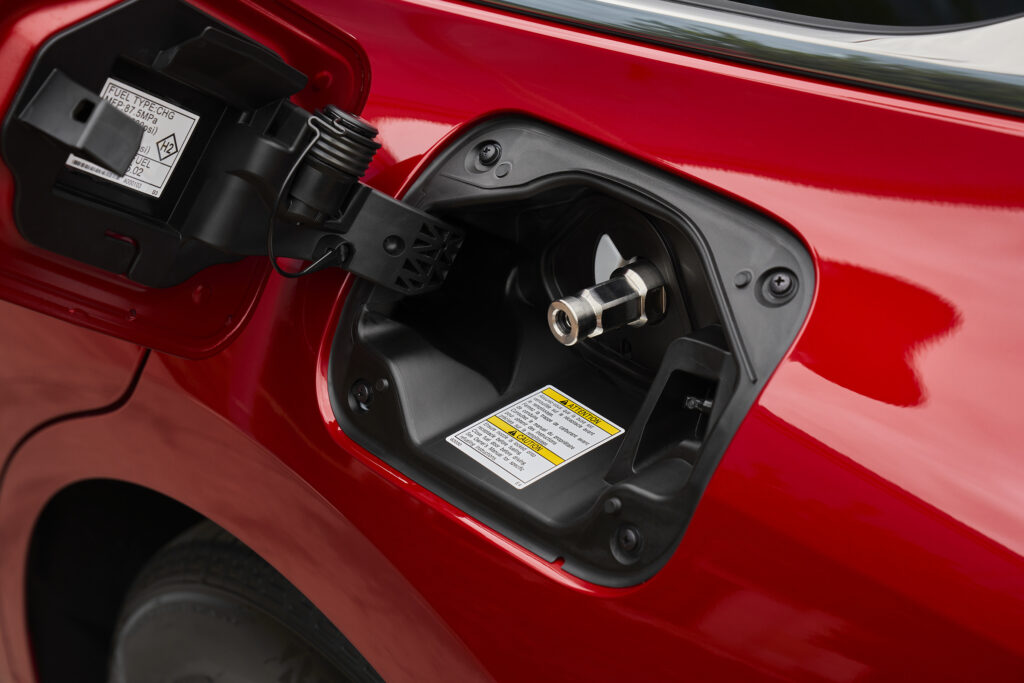
Toyota claims a WLTP range of 650km, although our brief drive suggested that could be a tad optimistic. Even so, something upwards of 500km is very easily achievable, the Mirai consuming something like 1.0kg of hydrogen per 100km.
Ride and handling
Sending its drive to the rear wheels adds to the character of the Mirai.
Squeezing the throttle out of a corner has it hunkering down at the rear nicely.
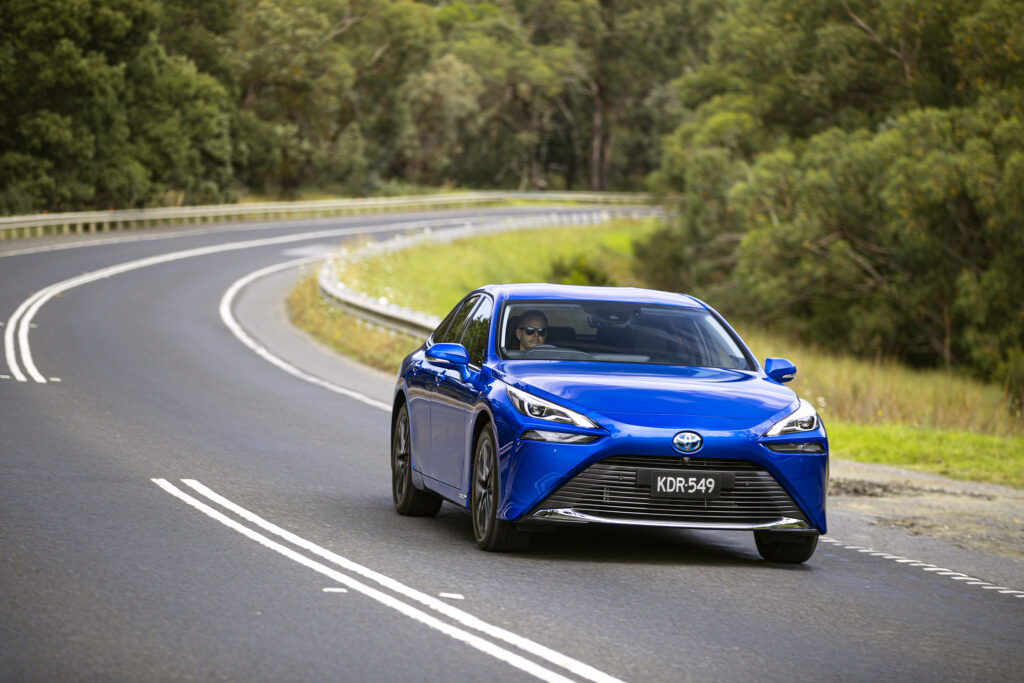
The steering is nicely responsive and accurate but in a relaxed way. While the Mirai has inherent capability and poise the focus is on comfort and relaxed motoring.
That flows through to the suspension, too, with a nice suppleness and associated control to the way it disposes of bumps.
What it doesn’t have is overt athleticism, something that on first blush seems to make it better suited to flowing corners rather than tight and twisties.

As for the cabin ambience, there’s not much sound to talk of other than some white noise from the tyres that increases with speed. But it’s all very subdued, adding to the overall relaxed nature.
Talking point
The Mirai has an “H20” button to the right of the steering wheel. Press it and a liquid dribbles out of an exhaust pipe just inside the left rear wheel.
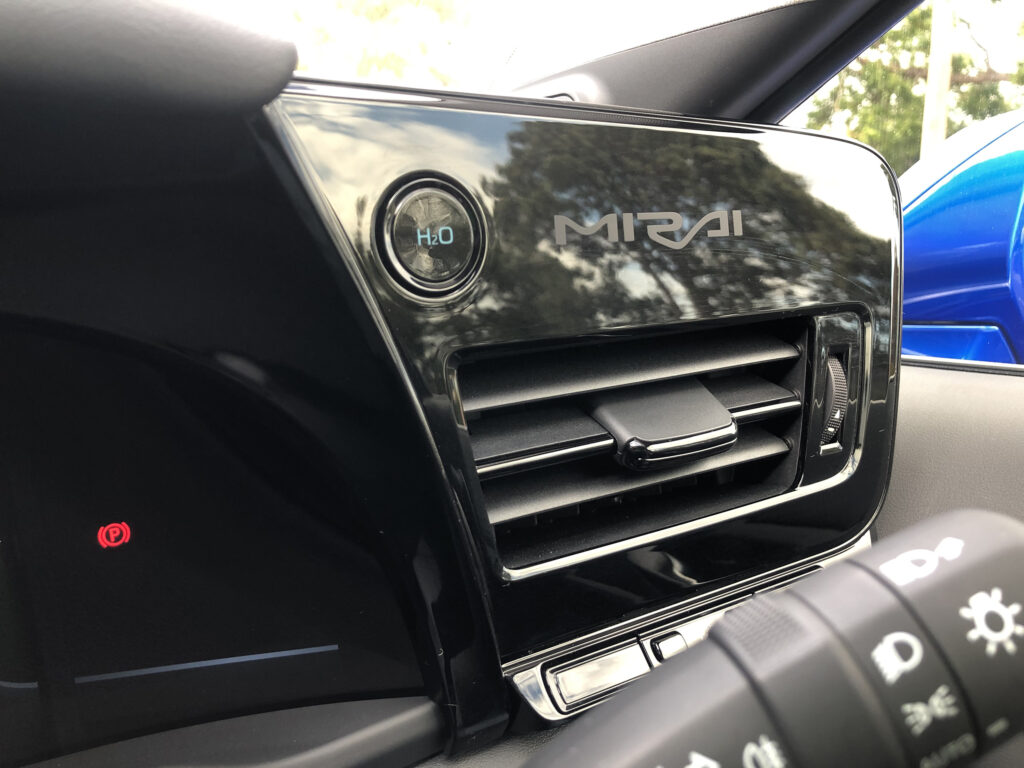
That liquid is pure water, so you can drink it – provided you’re confident nothing dirty has splashed up on the underside of the car, potentially fouling the outer tip of the exhaust.

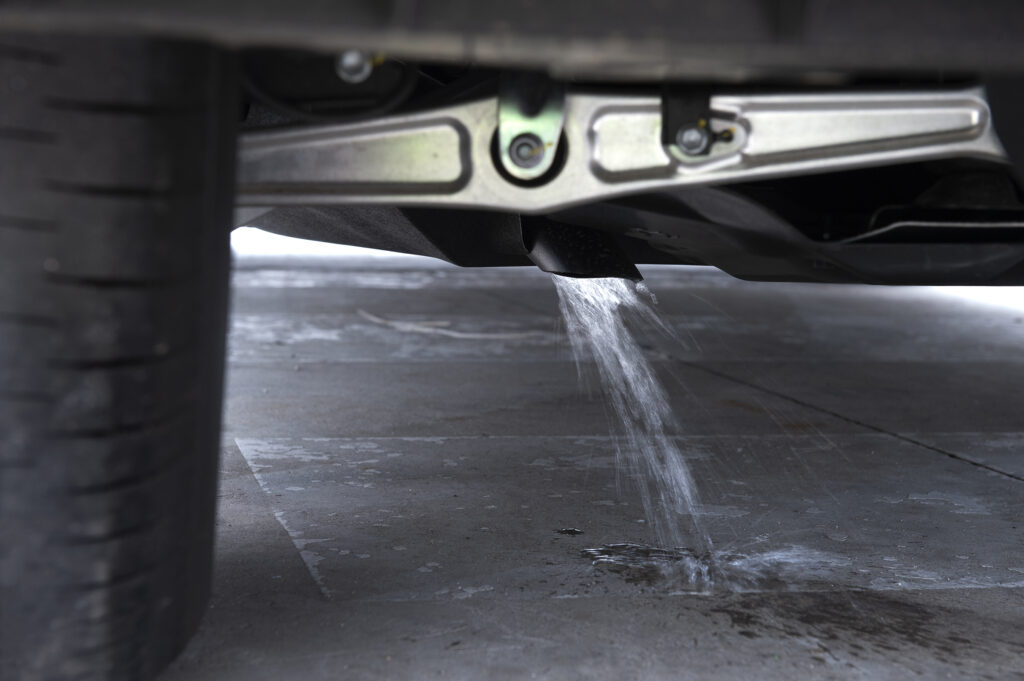
Safety
The Mirai hasn’t been independently crash tested but it comes with seven airbags and a full suite of active safety kit, including auto emergency braking (AEB), adaptive cruise control, blind spot warning, speed sign recognition and a 360-degree camera.
Verdict
There’s no point getting too excited about the Mirai just yet because it’s not for general sale, only limited lease. But Toyota says this car will be one sale in Australia within a few years.
The big question will be how much it costs, because at an estimated $100,000 it makes little sense against the BEVs currently bombarding the market.

So think of it more as a proof-of-concept vehicle, and one that does that assertively.
That it drives and presents well and packs in a respectable level of gear adds to its appeal.
2021 Toyota Mirai specifications
Price: NA, $63,000 over three years as part of a lease deal
Basics: FCEV, 5 seats, 4 doors, sedan RWD
Range: 650km (WLTP)
Battery capacity: 1.24kWh
Hydrogen capacity: 5.6kg
Battery warranty: 8 years/160,000km
Hydrogen consumption: 0.9kg/100km
Motors: 1 rear, 134kW/300Nm
AC charging: NA
DC charging: NA
0-100km/h: 9.2 seconds

